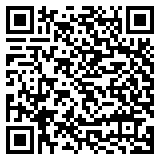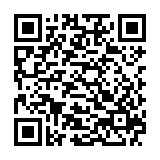Mastering multilingualism for interpretation is a challenging yet rewarding endeavor that opens doors to effective communication across diverse linguistic landscapes. Interpreters are crucial in bridging language gaps, ensuring understanding, and fostering collaboration. This article will explore strategies for successful interpreting, exploring the nuances, challenges, and rewards of navigating multiple languages in the dynamic field of interpretation.
Understanding the Role of an Interpreter
Before delving into the intricacies of mastering multilingualism for interpretation, it’s essential to understand the fundamental role of an interpreter. Interpreters serve as linguistic facilitators, conveying spoken words from one language to another in real-time. They enable communication between individuals who speak different languages, fostering understanding in various contexts such as conferences, legal proceedings, medical consultations, and more.
Language Pairs and Specialization
One of the first challenges interpreters face is determining their language pairs—the languages they are proficient in and can interpret between. Successful interpreters often specialize in specific fields, such as legal, medical, or conference interpreting. Specialization enhances language skills and deepens understanding of industry-specific terminology, making the interpreting process more accurate and effective.
Language Proficiency and Continuous Learning
Maintaining a high level of language proficiency is paramount for interpreters. Regular practice, exposure to diverse linguistic environments, and continuous learning are key components of mastering multiple languages. Interpreters must stay updated on language trends, colloquialisms, and industry-specific terminology to ensure accurate interpretation.
Cultural Competence
Beyond language proficiency, cultural competence is vital for successful interpreting. Interpreters must be aware of cultural nuances, gestures, and social conventions that can impact communication. Understanding the cultural context enriches the interpretation, fostering a more accurate representation of the speaker’s intended message.
Challenges of Multilingual Interpretation
Mastering multilingualism for interpretation comes with its set of challenges. Interpreters may encounter difficulties handling idiomatic expressions, rapid speech, or technical jargon. The pressure of real-time interpretation, especially in high-stakes situations, requires quick thinking and adaptability. Additionally, navigating dialects and regional variations adds another layer of complexity to the interpreter’s task.
Strategies for Overcoming Challenges
To overcome the challenges of multilingual interpretation, interpreters can employ various strategies:
- Preparation: Thoroughly researching the subject matter beforehand helps interpreters familiarize themselves with potential terminology, reducing the likelihood of being caught off guard during the actual interpretation.
- Active Listening: Sharpening active listening skills is crucial. Interpreters must listen attentively to the speaker, grasping the words, tone, emotion, and context to convey a more accurate interpretation.
- Use of Technology: Leveraging technology, such as translation apps or glossaries, can be valuable tools for interpreters. However, they should be used judiciously and not relied upon exclusively.
- Team Collaboration: In specific settings, interpreters may work in teams, supporting each other. This collaborative approach allows for the sharing of responsibilities and ensures a more comprehensive interpretation.
Rewards of Mastering Multilingualism for Interpretation
While mastering multilingualism poses challenges, the rewards are substantial. Interpreters who navigate multiple languages successfully enjoy:
- Global Opportunities: Proficiency in multiple languages opens doors to international opportunities, allowing interpreters to work on a global scale and engage with diverse cultures.
- Cultural Enrichment: Interpreters gain a deep understanding of different cultures, fostering personal and professional growth. Exposure to diverse perspectives enhances cultural sensitivity and broadens their worldview.
- Professional Fulfillment: Successfully facilitating communication and breaking language barriers is immensely rewarding. Interpreters play a vital role in connecting people and contributing to cross-cultural understanding.
Final Thoughts
Mastering multilingualism for interpretation is a dynamic journey that requires a combination of linguistic prowess, cultural awareness, and continuous learning. Interpreters who successfully navigate multiple languages overcome challenges and reap the rewards of global opportunities, cultural enrichment, and profound professional fulfillment. As the world becomes increasingly interconnected, the role of multilingual interpreters remains indispensable in fostering effective communication across linguistic boundaries.





0 Comments